The first encounter was a test of my instincts. I knew that the roe buck had seen me, and I figured that trying to conceal myself would worry him more, so I stood in front of a nearby tree in full view and checked his reaction. He was eating – a good sign. So I stayed where he could see me for the next half an hour while he moved about the field grazing and grooming himself, steadily working his way towards me as the rain began to fall. If I felt he was watching me more intently or his body tensed at a distant sound, I just turned away or looked down at the floor. When I turned back, he had always returned to grazing. When he moved close to the tree line, I spoke to him quietly so as not to spook him. He seemed to know I could not cross the fence boundary and barely batted an eyelid.
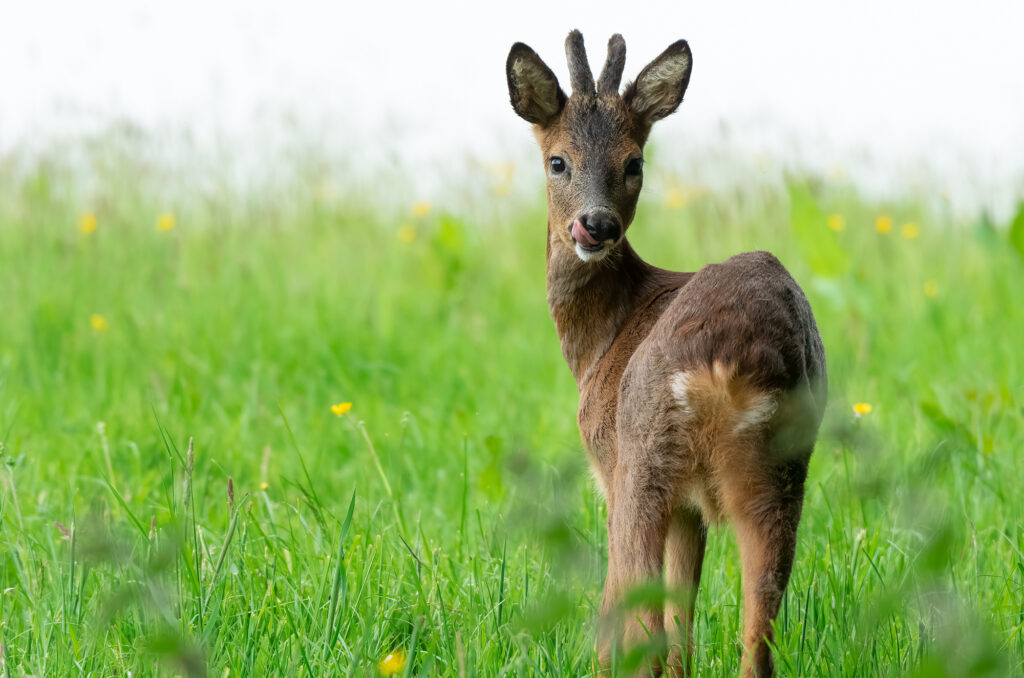
This character, with the little devil horn antlers and the angelic face, is Hellboy. He was the first local roe deer buck I got to know, and I honestly assumed he would be the only buck I would get close to. I was wrong. In this post, I share images and footage of the bucks I have gotten to know since the spring and explain how I earned their trust.
The baby buck
When I first met Hellboy, he was alone. Subsequent sightings reinforced my assumption that this young buck didn’t associate with the other deer, although he seemed surprisingly comfortable with me hanging around.
In the image below, you can see that he is shedding the velvet from his antlers. He was getting pretty annoyed by the flies buzzing around the dying bits of this protective furry skin while he was busy trying to feed in the buttercups.
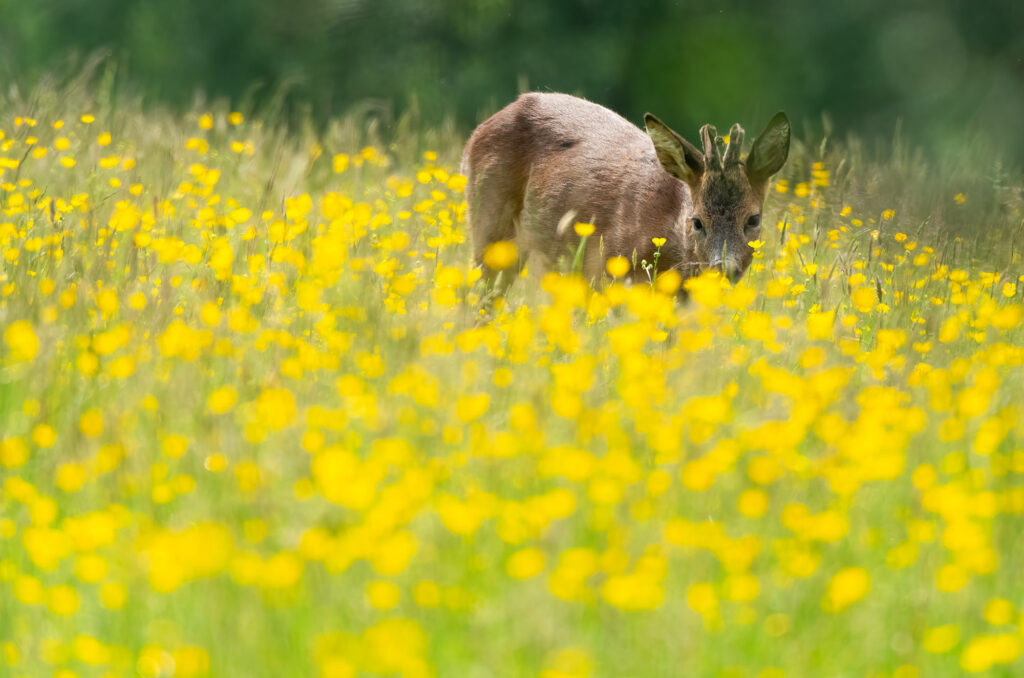
Roe deer bucks cast (or drop) their antlers around November to December. The older males tend to do this first. The antlers then grow back over a period of months (around January to March) while covered in velvet. When the antlers are fully grown, and the velvet has been completely rubbed off, they are described as clean. Again, it’s the older males that tend to have clean antlers first, which may explain why Hellboy’s antlers weren’t clean until later in June.
Back button focus helped me lock onto Hellboy through the buttercups and long grasses waving about in the breeze. I positioned myself to get a good carpet of out-of-focus buttercups in the foreground. I love the splash of colour they bring to what would otherwise have been an overwhelmingly green scene.
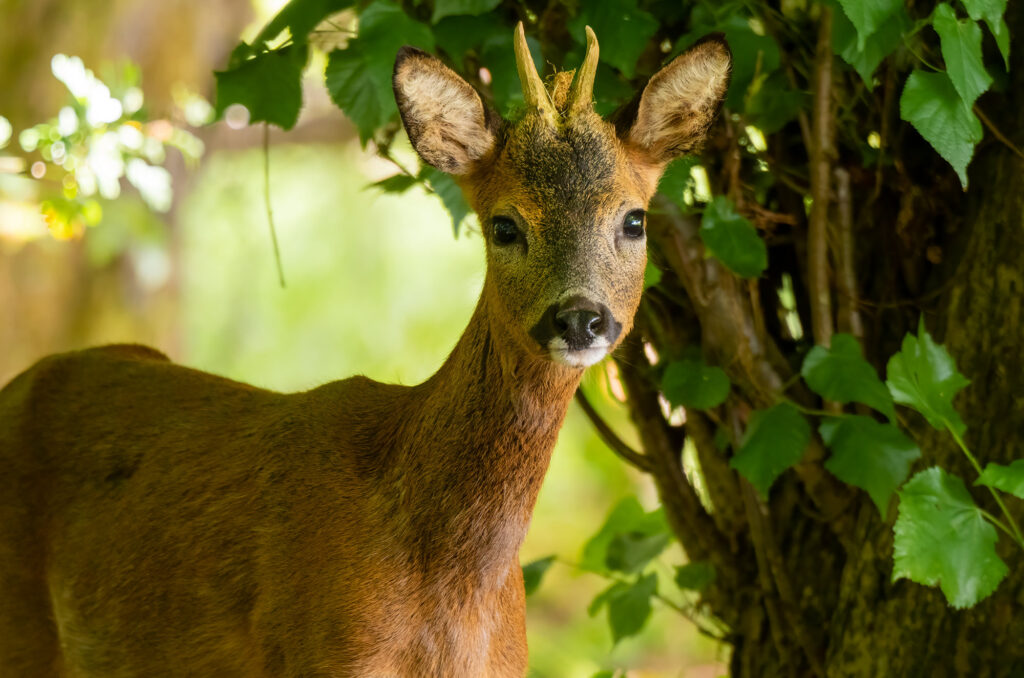
When I captured the image above, he seemed to be steadily getting closer to me and I worried he would suddenly panic. But no, after posing for a few images, he moved away and sat down. I left him to it.
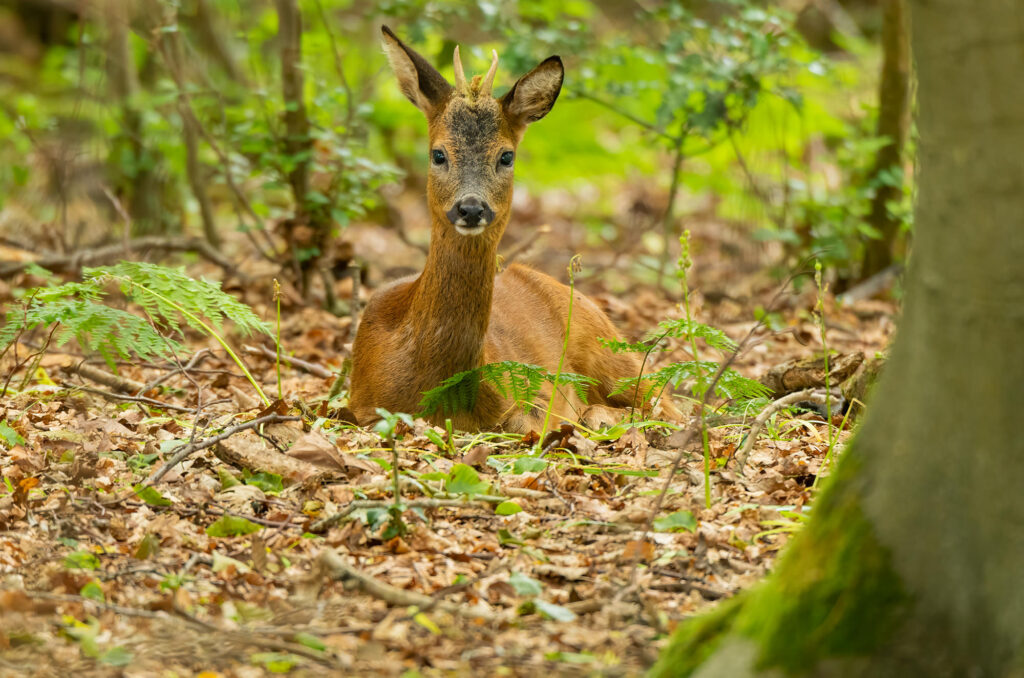
My assumption that Hellboy was a young buck who had dispersed (moved away from his natal territory) proved incorrect. During recent walks, I have regularly seen him with doe Blue and her two kids. On his website, roe deer photographer Mark Nicolaides notes that “this process of parent-offspring and sibling separation is a complex one, and various forms of associations between the deer can exist for well over a year after the youngsters’ first birthday.” He points out that many return to their mother in autumn and winter, which fits with the behaviour I am witnessing. Hellboy has regularly been seen grazing and resting with Blue and the kids out in the open, in a place I call the top field. I have also had the pleasure of watching them move as a group. But Hellboy isn’t the only buck that pauses in the top field.
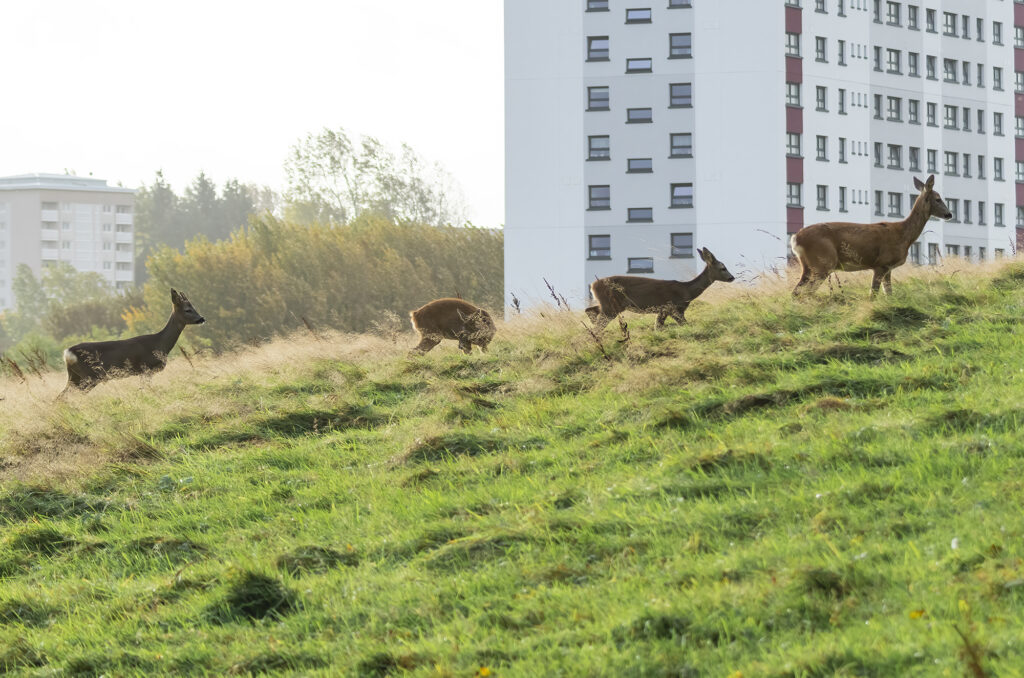
The brawny buck
This character is Quint. In the image below you can see his squint (aka not straight) jaw, hence the name. Well, that and the fact that he is a bit grizzled and intimidating but also a bit lovable, like Robert Shaw’s character Quint in Jaws – one of my favourite characters and my favourite film.
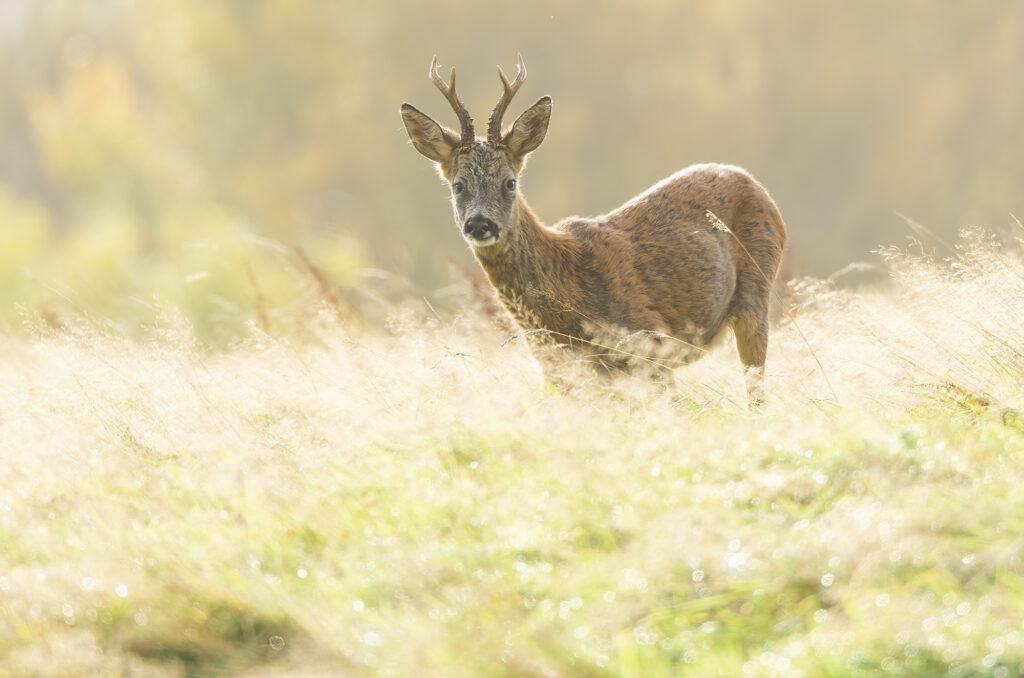
I remember the thrill of photographing this big buck for the first time – a feeling I still get. Having become used to Hellboy’s delicate demeanour, Quint’s size and strength was a different prospect. His 6-pointed head of antlers spotted across the top field was the first indication that there was a different buck in town. Since that moment I have learned to differentiate him from the other bucks, without needing to see his headgear. This knowledge should be handy when the bucks shed their antlers in the coming weeks.
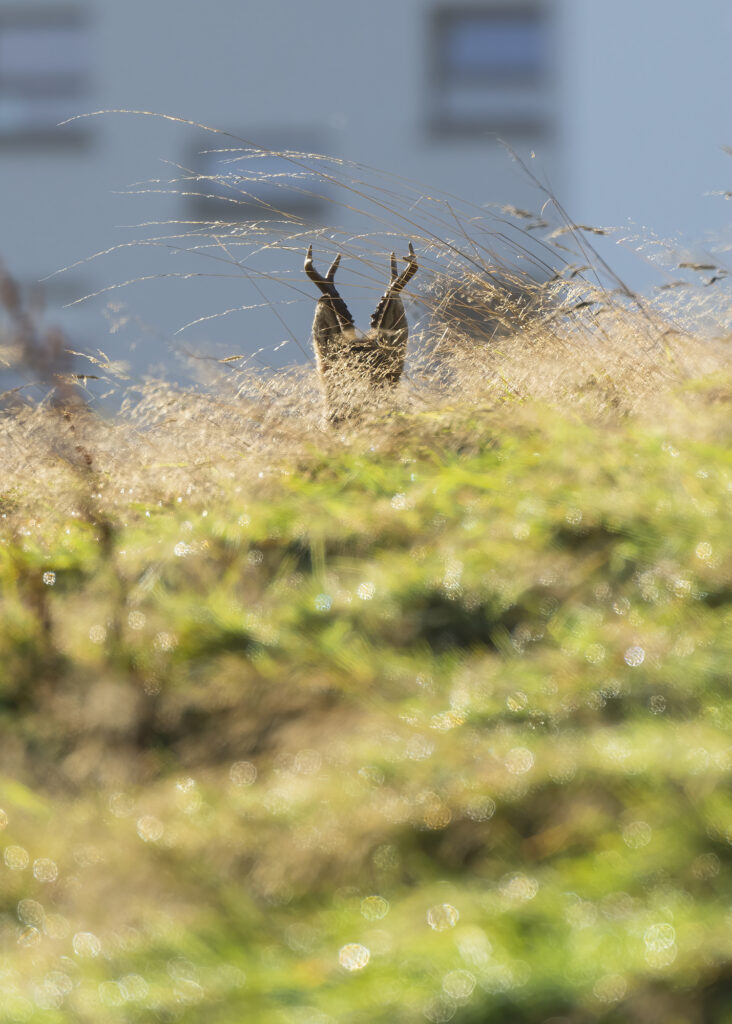
Although he looks spooked in the image below, this was due to a barking dog nearby rather than my presence. Quint was aware I was there because I had been humming to him. Yes, you read that correctly. I had been humming to try and reassure him that I wasn’t sneaking up – it worked! I spent many happy minutes with him before he eventually disappeared over the brow of the hill. He now remains calm at the sound of me talking to him, which is a relief as I had run out of hummable tunes.
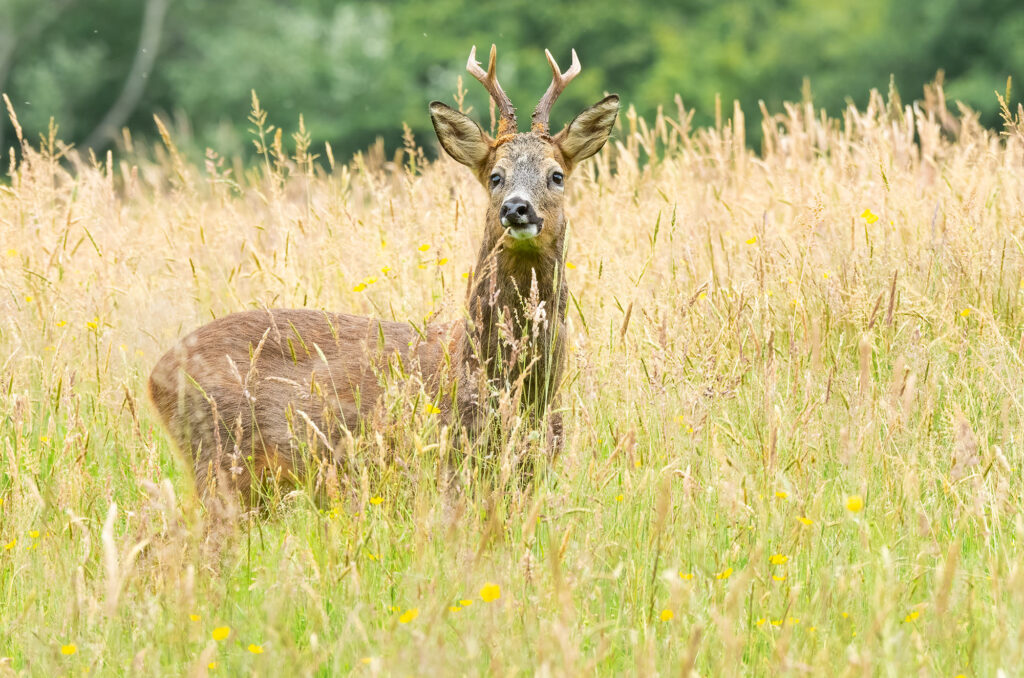
I usually spot Quint on his own but, occasionally, he will share the top field with Blue, Hellboy and the kids. However, when they move away as a group, he will often remain. Whereas Blue and the youngsters seem to feed off each other’s wariness (when one becomes uncomfortable for any reason, they all move), Quint’s solitary nature seems to give him the confidence not to follow the herd. The question for me is whether to photograph the group or stay with the lone buck who behaves like the king of the top field.
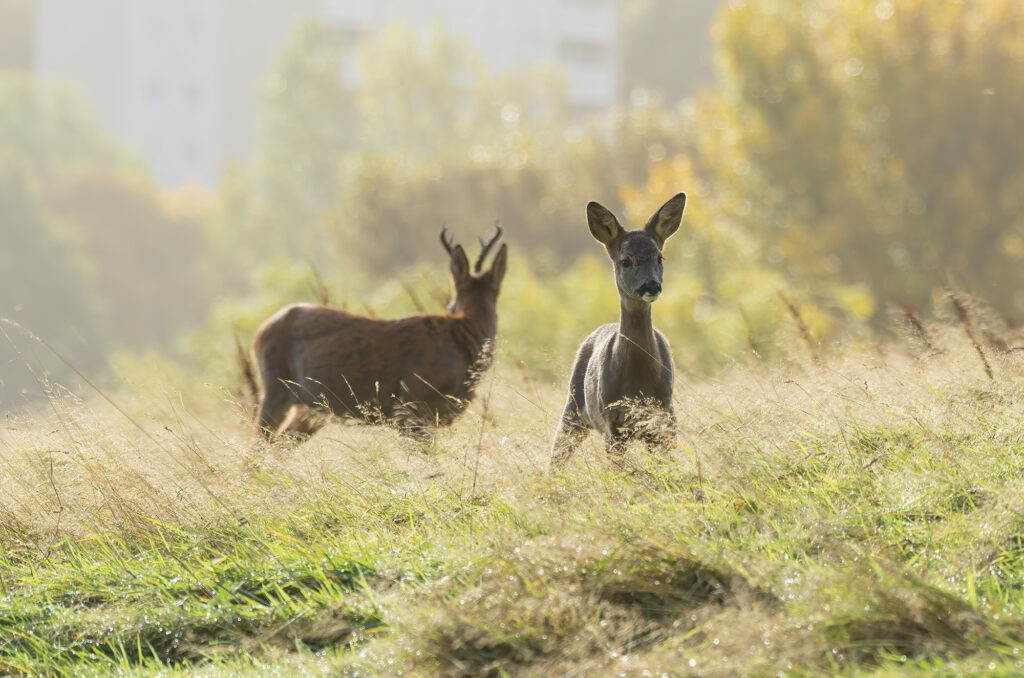
The roe deer rut occurs from mid-July to mid-August. Much of the activity occurs at dawn or dusk, but I was lucky to spot Quint shadowing a doe mid-morning. Although he was following her tracks, I didn’t witness him chasing her. Unfortunately, something (not me) spooked them during the encounter shown below, and they both disappeared across the top field.
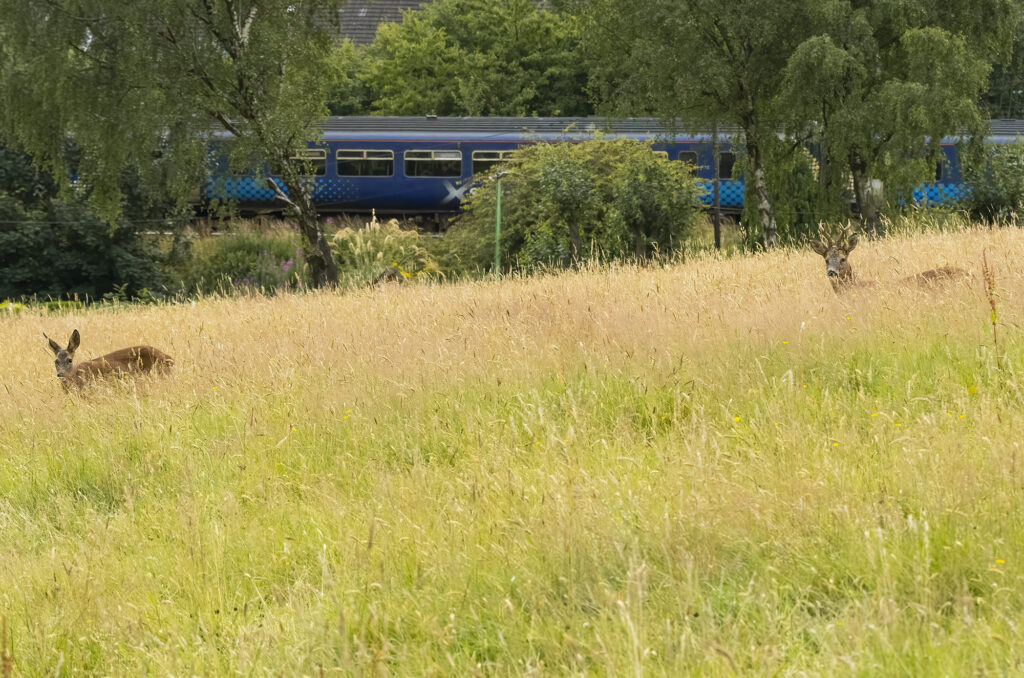
The bottom buck
There is one buck who hasn’t appeared in the top field yet, and that buck is Chewie. He may be the prince of the bottom field but is boldest in the woods.
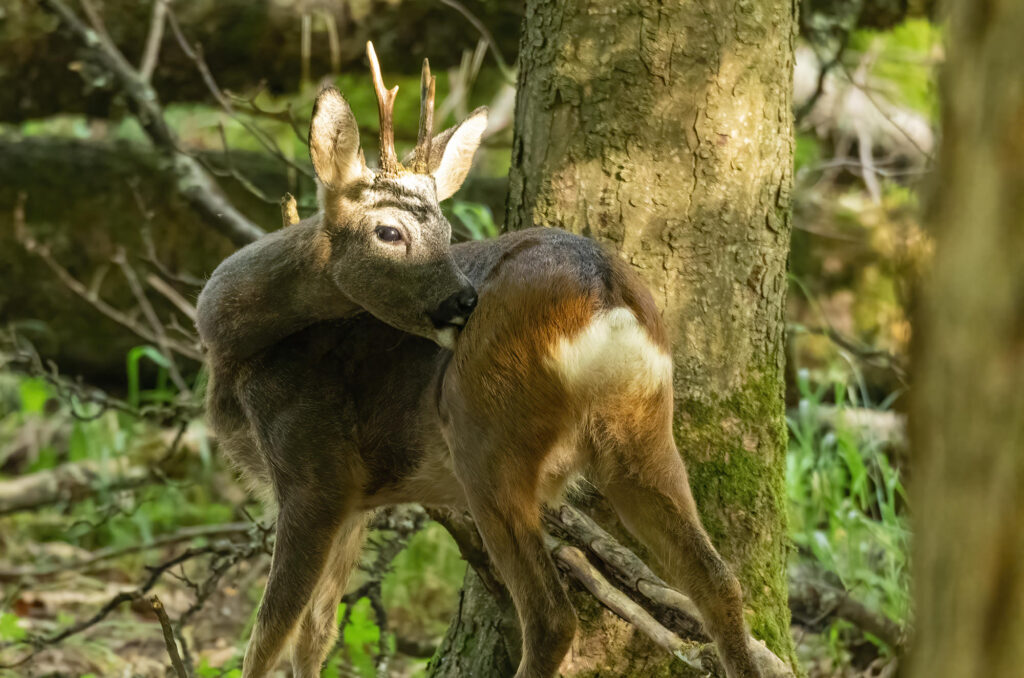
If I talk to him, as with the other deer, he becomes accustomed to my presence and will allow me to photograph him moving through the trees. He will also permit me to follow him – as long as I keep a respectable distance and stay visible.
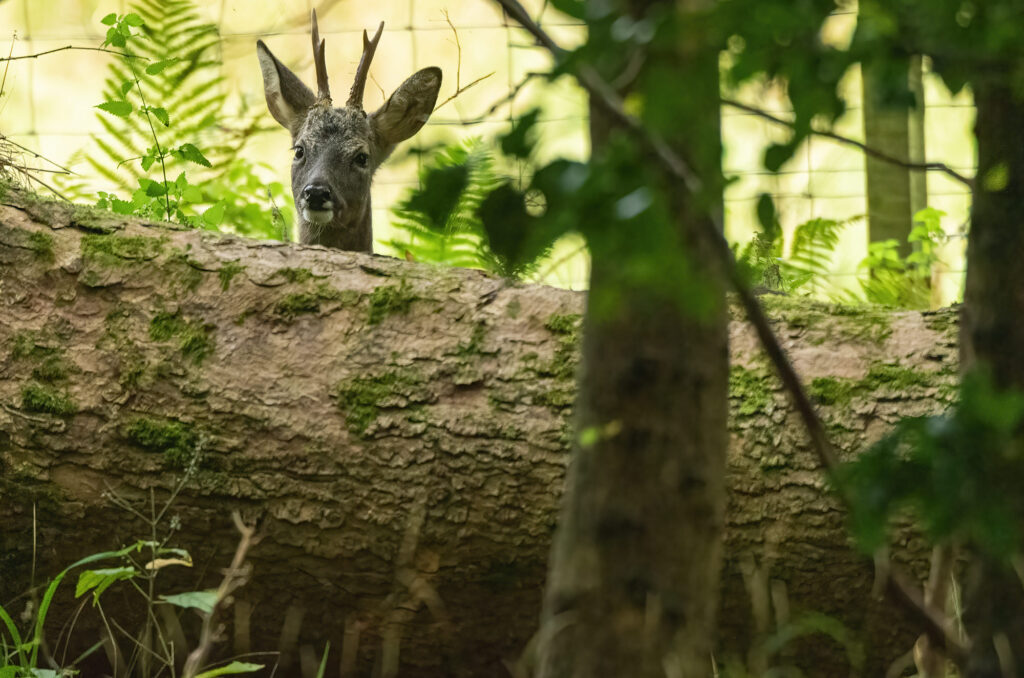
I named him Chewie after the slightly daft facial expressions I captured in images of him chewing (see the facial expression below).
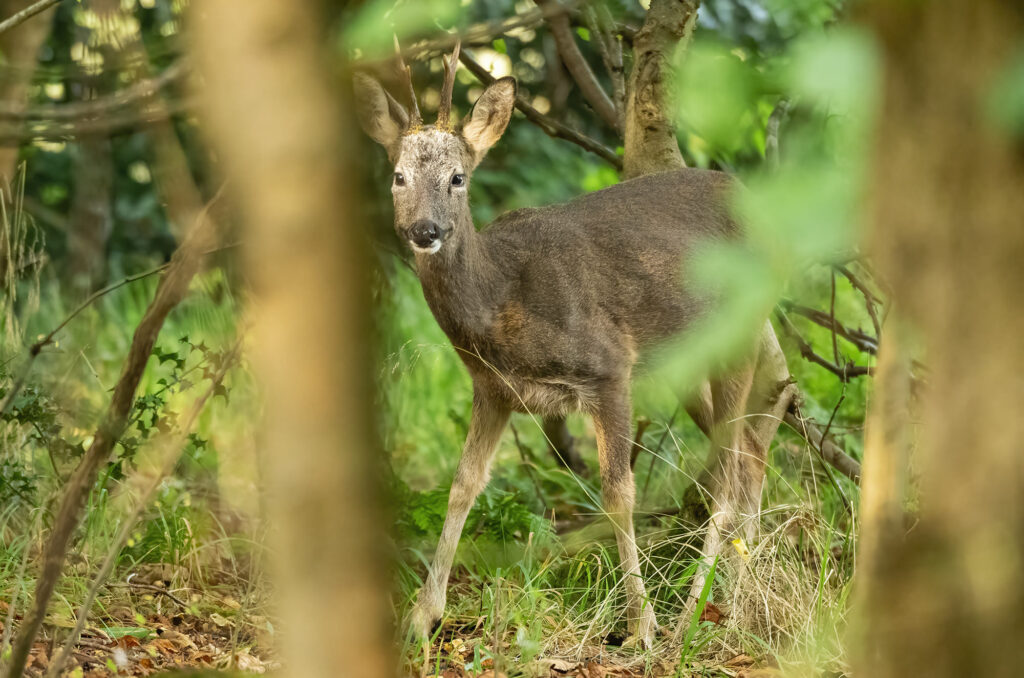
The only interactions I have witnessed between Chewie and the other deer have been in the company of doe Red and her kids. I have yet to see him anywhere near Quint, and I am guessing this is for a good reason – as he certainly looks like more of a challenger to the current king than Hellboy.
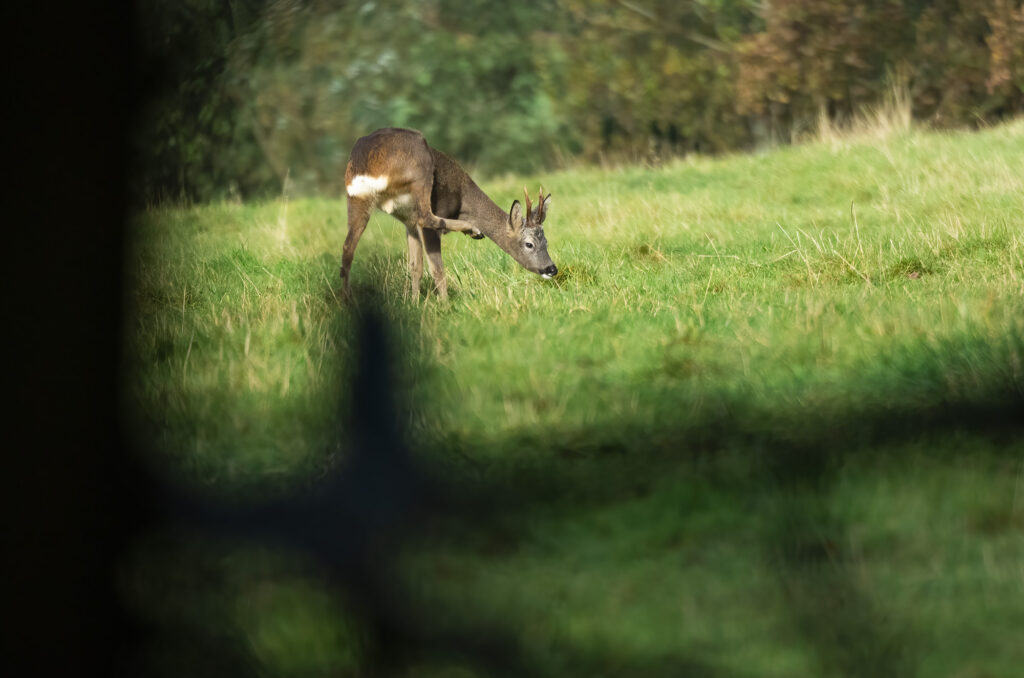
Urban bucks bucking the rural trends?
Despite their differences, all three of these individual animals have become accustomed to my photographing them. The same rules I stick to when photographing Blue and the babies apply to them too. I hope the images and videos in this post prove that these techniques work. However, I am well aware that these urban deer have to be more tolerant of humans in the background of their lives because of their location. They remain nervous of people but are used to our presence to an extent.
I am interested to see how the group dynamic changes in the coming months and whether the behaviour of these urban roe deer differs from their rural counterparts. As you can probably tell from my vague notes in this post, I still have tons to learn about roe deer behaviour and will continue to refer to Mark Nicolaides’ informative and enthralling book – A Year in the Life of a Roe Deer – and his website. I hope to build my knowledge of these magnificent mammals so that I can tell their story in the coming months.
If you are interested in photographing deer, I recommend reviewing the code of conduct on the British Deer Society website. They developed the code with the help of their wildlife photography ambassador – and experienced deer photographer – Jules Cox.

